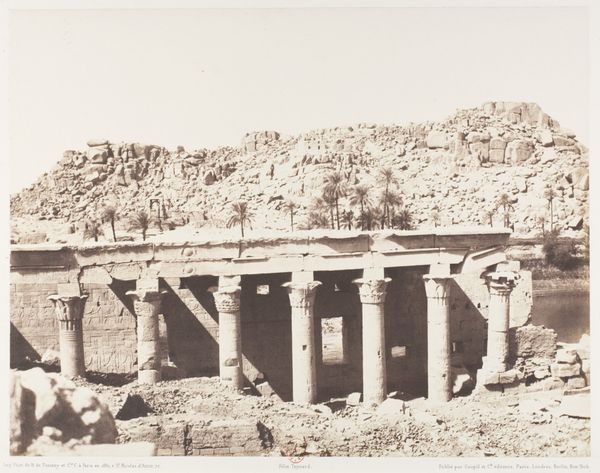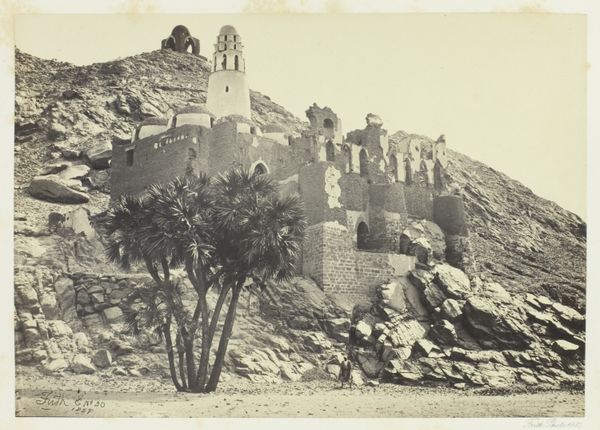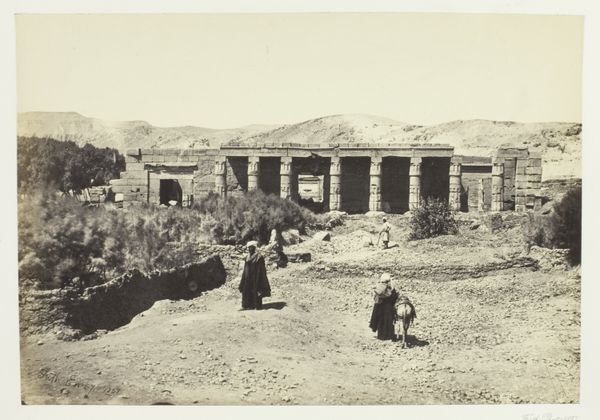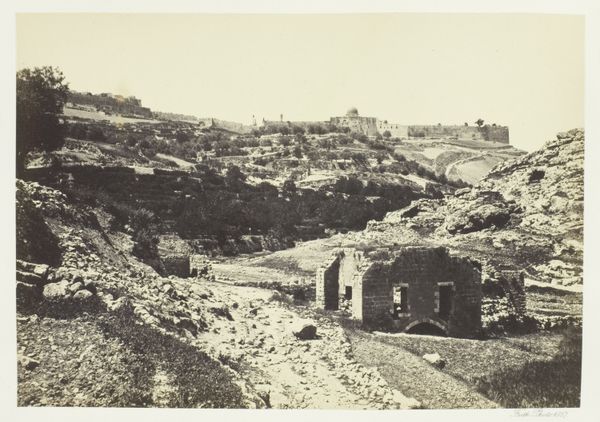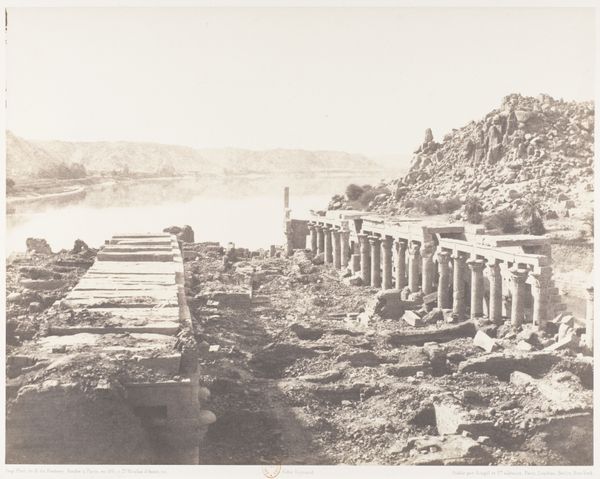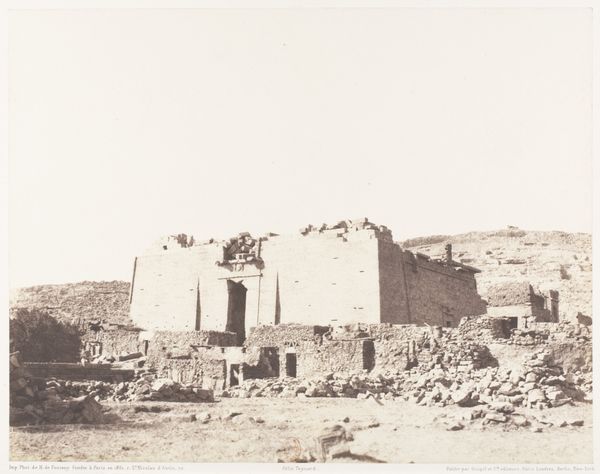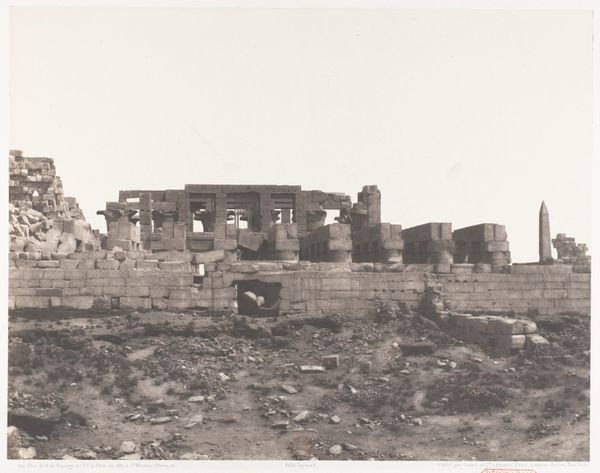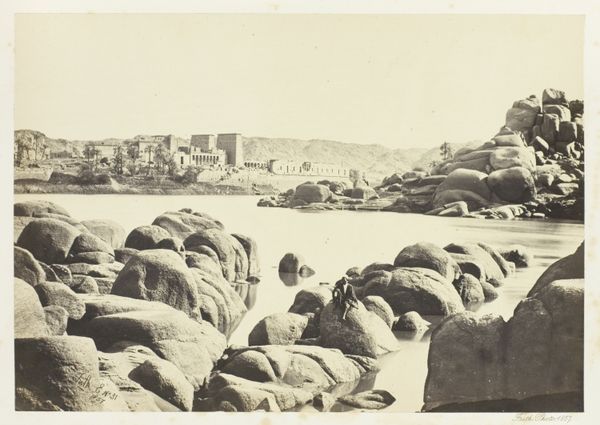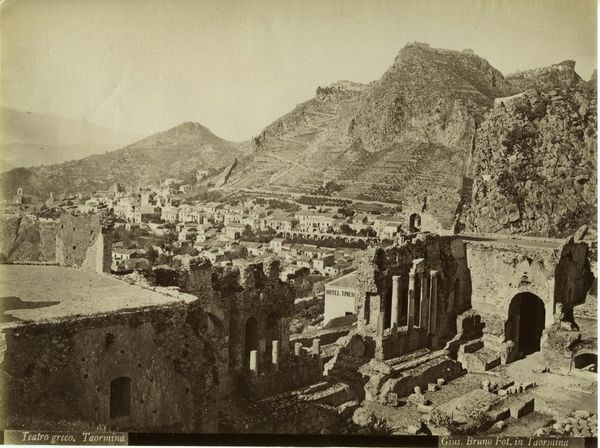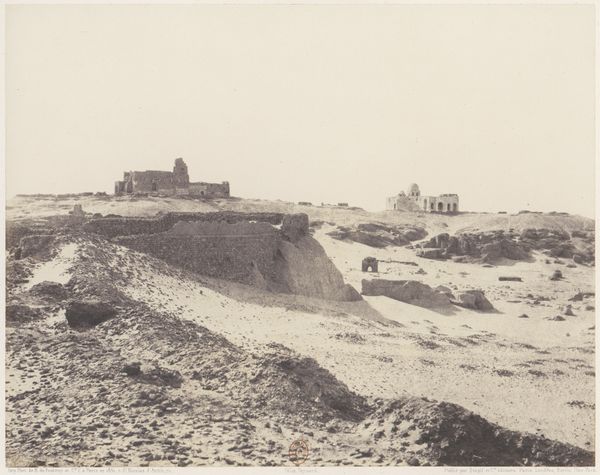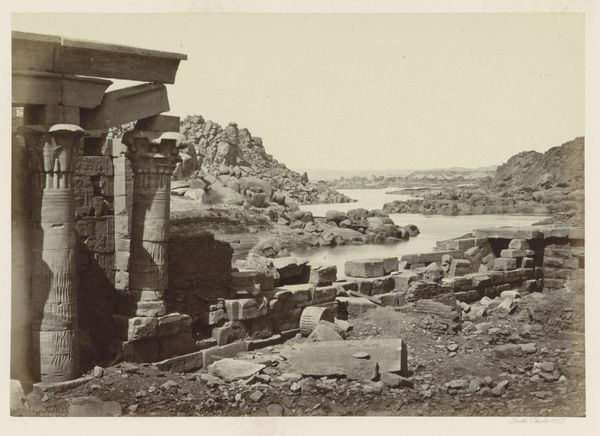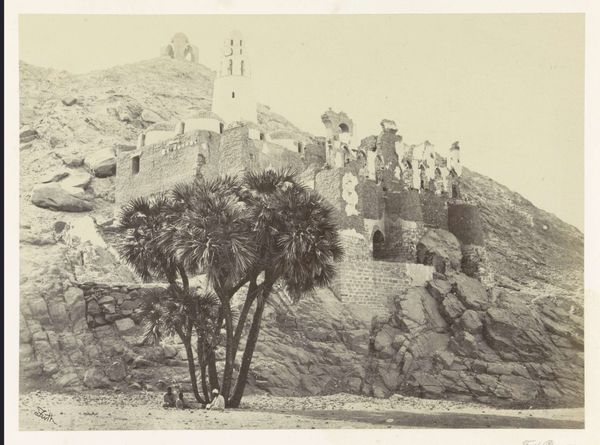
silver, print, photography
#
16_19th-century
#
silver
#
photo restoration
#
natural tone
#
natural photography
# print
#
war
#
natural cool tone
#
natural composition
#
photography
#
outdoor loving
#
egypt
#
england
#
nature friendly
#
nature environment
#
men
#
agriculture
#
remaining negative space
Dimensions: 15.7 × 20.9 cm (image/paper); 29.4 × 42.6 cm (album page)
Copyright: Public Domain
Editor: So, this is Francis Frith's 1857 silver print, "Antiquities at Biggeh, Opposite Philae." It's striking how timeless yet melancholic it feels, capturing this ancient site. What story do you think it's telling us? Curator: It's a loaded image. On the surface, we see the picturesque ruins and the exotic 'other,' meticulously composed for the Victorian gaze. But let's consider the colonial context. Frith was commercially driven. This isn't just a record; it's a visual consumption of a culture under imperial dominance. What do you make of the implied power dynamics? Editor: That makes me see it differently! I was initially focused on the serene landscape and the sense of history. I hadn't fully considered Frith's role as a Western photographer framing Egypt for a European audience, especially with British influence expanding there. Curator: Exactly. The image freezes a moment, ostensibly preserving it. But what's really being preserved and for whom? Are we looking at cultural preservation or cultural appropriation? The “Antiquities” aren’t just objects; they are signifiers in a complex web of colonial power and orientalist fantasy. Does this resonate with current discussions around representation? Editor: Definitely! It highlights the photographer's subjectivity and how it can perpetuate power imbalances. Now I am questioning the ethics of early travel photography much more than before! Curator: And that is the starting point of critically engaging with this artwork. Recognizing the layers of historical context lets us unravel the ideologies embedded within its seemingly simple, elegant surface. It challenges us to become more responsible viewers, aware of the politics of seeing and being seen. Editor: I will always read images from a new, more activist perspective! Thank you for shining some light. Curator: It's a continual process of questioning and unlearning. Hopefully we both expanded our thinking!
Comments
No comments
Be the first to comment and join the conversation on the ultimate creative platform.

